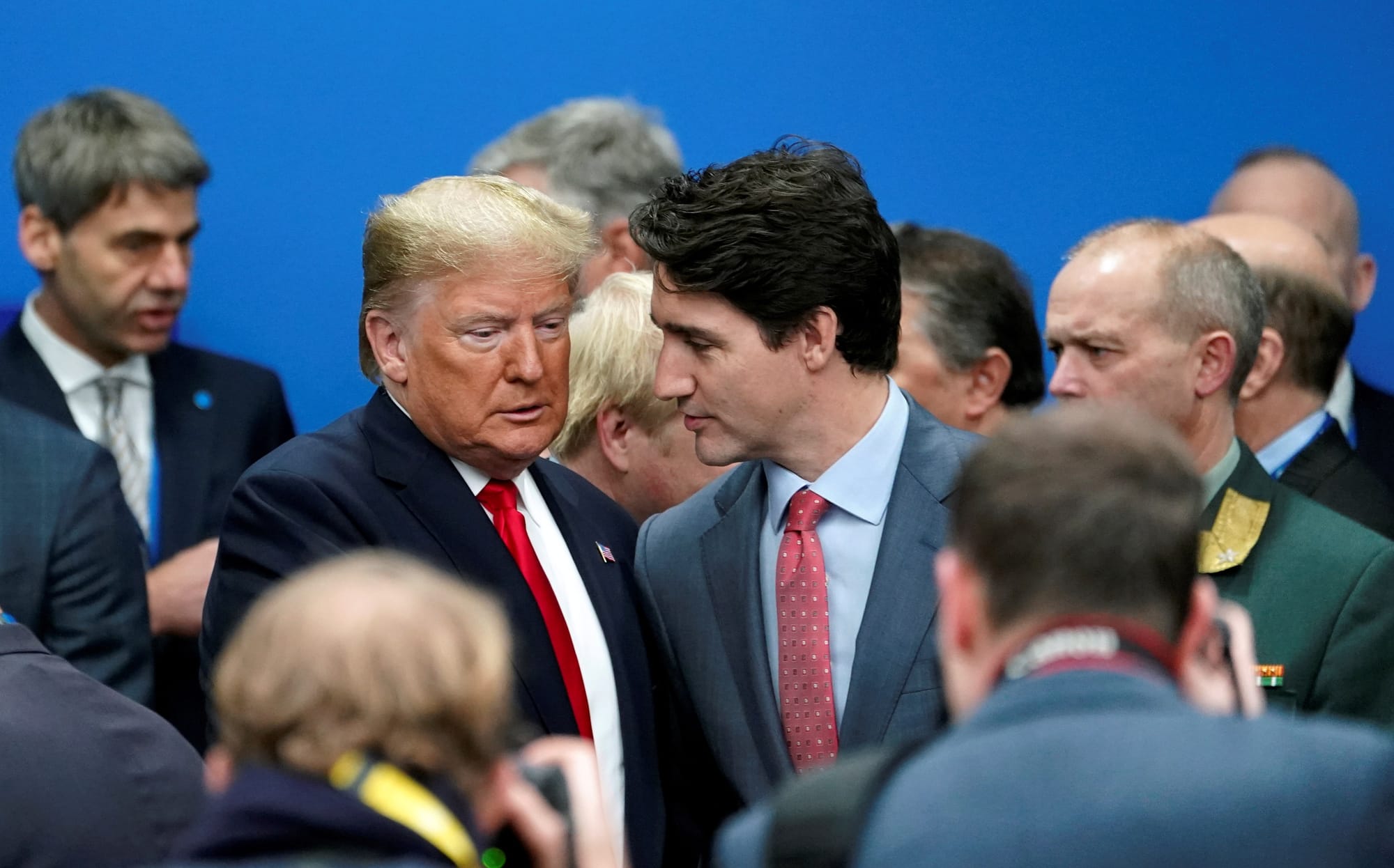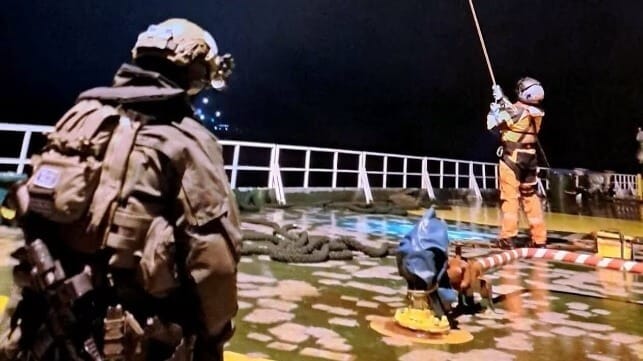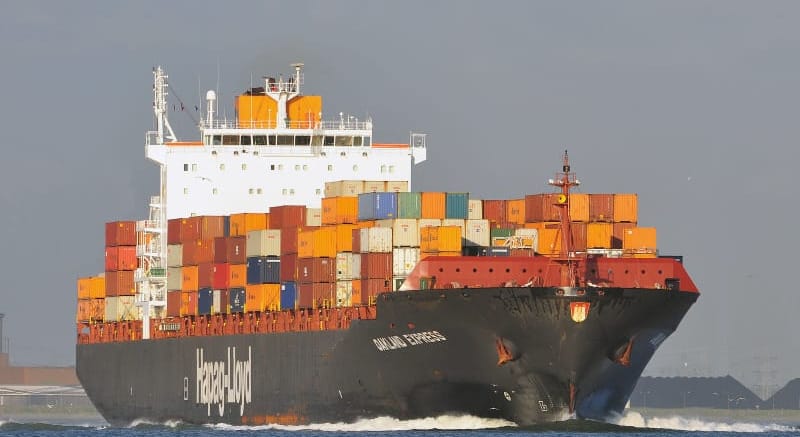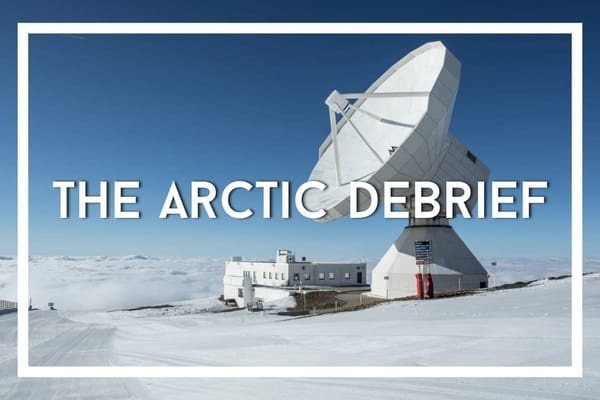The Monthly Dispatch: January
The Monthly Dispatch newsletter will delve deeper into the most important developments in the Arctic region of the previous month. Exclusive to Patreons.
Dear reader,
This is the first edition of The Monthly Dispatch. This newsletter will delve deeper into the most important developments in the Arctic region of the previous month. Only this edition will be available to everyone; beginning with the February Dispatch, the newsletter will be exclusive to paid Patreons (all tiers). If you want to support my work and don't want to miss out on the monthly newsletter, consider joining the Patreon.
The West
Trump's Takeover Threats Weaken West's Arctic Unity
Donald Trump's first weeks in office proved to be chaotic as the U.S. president started off his second term by threatening to annex Canada via economic pressure and using military force to occupy Greenland, which is part of the Kingdom of Denmark. While Trump has not followed through with either of his threats, the relationships between these nations have been significantly impacted.
Following the U.S. election, Trump immediately began to throw around the weight of America's military and economic power to threaten his Arctic allies. While it is true that Greenland is crucial to Arctic security, this is not a new revelation and the reason that America has maintained a military presence on the island since the Second World War. The U.S. currently controls and operates the Pituffik Space Base in northern Greenland.
Additionally, Denmark and America have signed a number of treaties increasing the U.S.'s ability to operate on Danish territory due to concerns driven by Russia's invasion of Ukraine and its increasing activity in the Arctic. However, instead of presenting a united front among Western Arctic allies, which make up 7 out of 8 Arctic nations, there are discussions about how Europe can stave off an American takeover of sovereign territory.
At the same time, China and Russia are increasing cooperation in the Arctic region by conducting combined military training and joint economic development projects.
So why is trump doing all of this? There is speculation that Trump is interested in the large deposits of lithium and other rare earth metals. Others claim that it is Trump's desire to create a legacy by being the president that expanded America's borders.
This is not the first time Trump expressed his desire to take over Greenland. During his first term, the president ordered a small task force to analyze possible options that would allow the US to take control of the island. However, when news broke in the summer of 2019 that the Trump administration was looking at ways to acquire the island, Greenlandic and Danish politicians strongly opposed the idea.
Although not directly linked to Trump's threats, Denmark has announced a number of new defence measures that will be implemented to improve the country's Arctic security. The overall defence package is worth 2$ billion.

Trump has also announced that he would implement tariffs on all Canadian products entering the U.S., alienating America's closest ally and the second largest Arctic nation.
Trump did not follow through with his promise to impose tariffs on February 1st, but they are only postponed for 30 days. This news came on Feb. 3, after a phone conversation between Canadian Prime Minister Justin Trudeau and the U.S. president.
Allegedly, Trump agreed to hold off on the tariffs if Canada implements measures to improve border security to reduce the crossing of fentanyl and illegal immigrants into the U.S. While Trump lauded this as a win for himself, Canada's federal Liberals implemented the same plan in mid-December. Regardless, even if the tariffs never go into effect, they have created a strong anti-U.S. sentiment amongst many Canadians who are choosing to boycott American products and feel betrayed by a long-time ally.
Trump's spats with Canada and Denmark may not have long-lasting effects on the nations' Arctic cooperation, but it has had a significant impact on the perception of the West's unity in the Arctic, which has been fostered under Biden through a variety of military exercises and defense pacts.
Nordic Nations Crack Down on Russian Saboteurs
Images of Finnish police forces boarding the Eagle S, a Russian-linked crude oil tanker, signaled a significant shift in how Nordic states responded to suspected sabotage of European infrastructure by Russian-linked vessels in the Baltic Sea and Arctic Ocean.
Finland detained the Eagle S, a vessel that is part of Russia's shadow fleet that is used to circumvent Western sanctions, on Dec. 27 as it was suspected of dragging its anchor along the seabed of the Baltic Sea to cut communication cables between Finland and Estonia.
When Finnish authorities asked the vessel's crew to raise anchor, they found that only the chain rose and the anchor was missing. The anchor was found on Jan. 7, and it was determined that it had caused the damage to the communications cable. Investigators also told the media that had the ship not been stopped by Finnish police, it would have likely damaged more infrastructure, including a gas pipeline.

Prior incidents, like the China-flagged bulk carrier Yi Peng 3 allegedly damaging an undersea cable between Germany and Finland, were allowed to happen without any consequences. For example, the Chinese vessel was surrounded and briefly monitored by European navies but was eventually allowed to leave the Baltic Sea.
The boarding and investigation of the Eagle S proved to be a pivotal moment as it led to the creation of a new NATO initiative called "Baltic Sentry," which seeks to improve infrastructure security and surveillance to avoid similar incidents in the future. NATO states have allotted military assets to the new mission, such as Sweden, which is contributing three warships and a maritime surveillance aircraft.
Since the program's implementation, two more Russian-linked ships have been detained by Sweden and Norway.
Swedish authorities detained a bulk carrier ship, called Vezhen, under suspicions that the vessel intentionally damaged undersea communication cables between Latvia and the Swedish island of Gotland. Meanwhile, Norwegian authorities detained the Silver Dania, a reefer cargo ship, after damaged fiber-optic cables were discovered.
Russian and Chinese-linked ships have also been found to be acting suspiciously around crucial European infrastructure, such as Norway's oil fields in northern waters and off the British coast. These vessels are thought to be mapping out the infrastructure.
Russia
Big Trouble in Northern Russia: Sanctions, Collisions, and Frozen waters
The final days of the Biden administration saw a number of measures implemented to hinder Russia as much as possible before handing over the White House to Donald Trump.
Russia's oil and gas industry was the main target of US sanctions, as it is one of the largest sources of revenue for the Russian war economy. A lot of these assets are located across Russia's Arctic region.
As for the actual targets of these sanctions, they included oil producers, tankers, intermediaries, traders, and ports. These measures aim to cripple Russia's ability to export crude oil. Russia's Murmansk port was a part of the sanctions package, which is estimated to cost Russia billions of dollars per month.
Biden's final sanctions were targeted at a newly constructed port and a major lithium mine in northern Russia.
The port of Lavna was one of Russia's priority infrastructure developments, as it was supposed to be the center of all trade going through the Northern Sea Route. Putin wanted the port to facilitate trade between Asia and Europe and was crucial to Russia's Arctic strategy. During a visit to the construction site in 2023, Putin noted that the completion of the hub should be a top priority and must be complete as soon as possible. The facility is likely to shut down for the time being.
The lithium mine, located on the Kola peninsula, is a joint venture between Russia's Polar Lithium and Chinese state-owned construction conglomerate, MCC International Incorporation Ltd. Lithium is highly sought-after as it is crucial for electric batteries. As in other similar situations, the project will likely be abandoned by the MCC International; however, nothing public has come out at the moment. The mine was set to produce an annual 2 million tons of ore and 45,000 tons of lithium hydroxide and carbonate.

Aside from sanctions, Russian vessels have faced numerous issues across the Northern Sea Route (NSR). As traffic through the route fell far below Russia's expectations, authorities allowed vessels that are not capable of traversing freezing waters to enter the NSR. This left five ships beset in the Arctic region.
Although Russia has a number of icebreakers, rescue operations can be difficult and take a long time. To make matters worse, the 50 Let Pobedy crashed into one of the oil tankers, heavily damaging both ships.
Additionally, the aforementioned NATO mission Baltic Sentry will also focus on tracking Russia's shadow fleet tankers, ensuring they have a difficult time unloading cargo from sanctioned oil facilities.
At the end of the day, Russia will always have China and other periphery nations as customers, and with Trump in the Oval Office, some European nations seem to be reconsidering accepting Russian energy.
Biden-era sanctions and sanctions from the EU have done significant damage to the Russian industry. Pre-war estimates had Russia owning about 40 percent of the global liquefied natural gas market in the next few decades, but it is now unlikely to surpass 15 percent.

